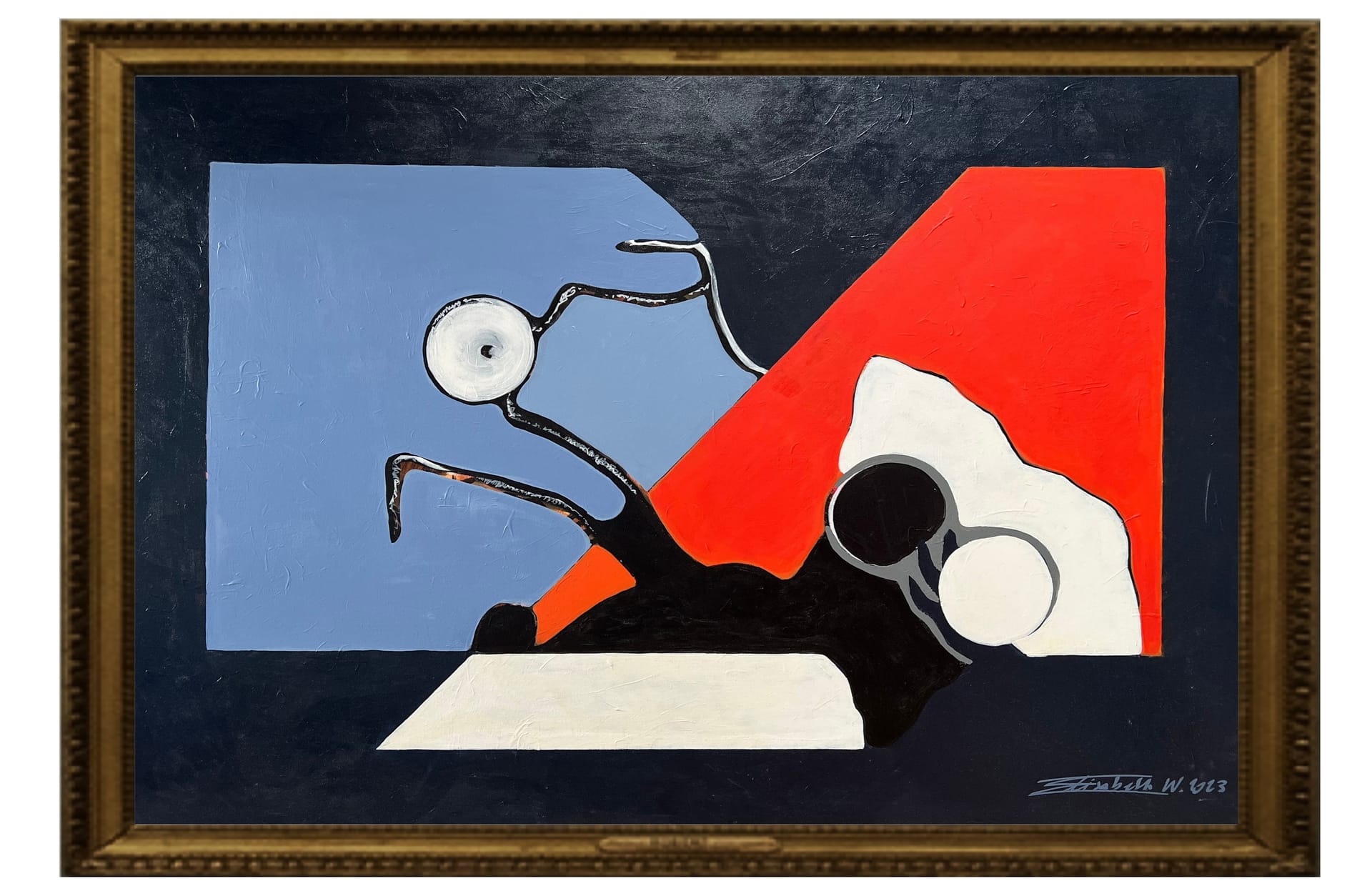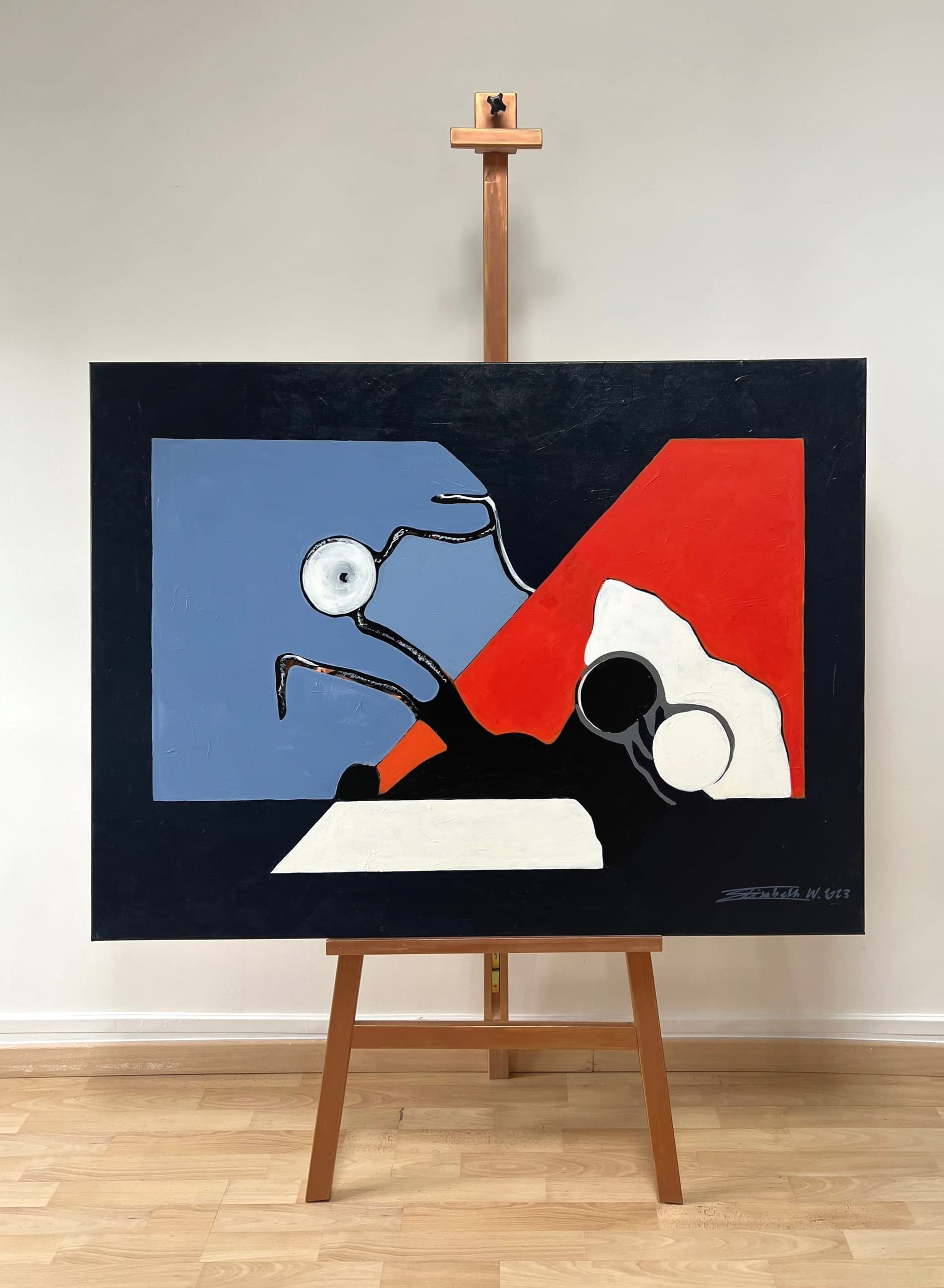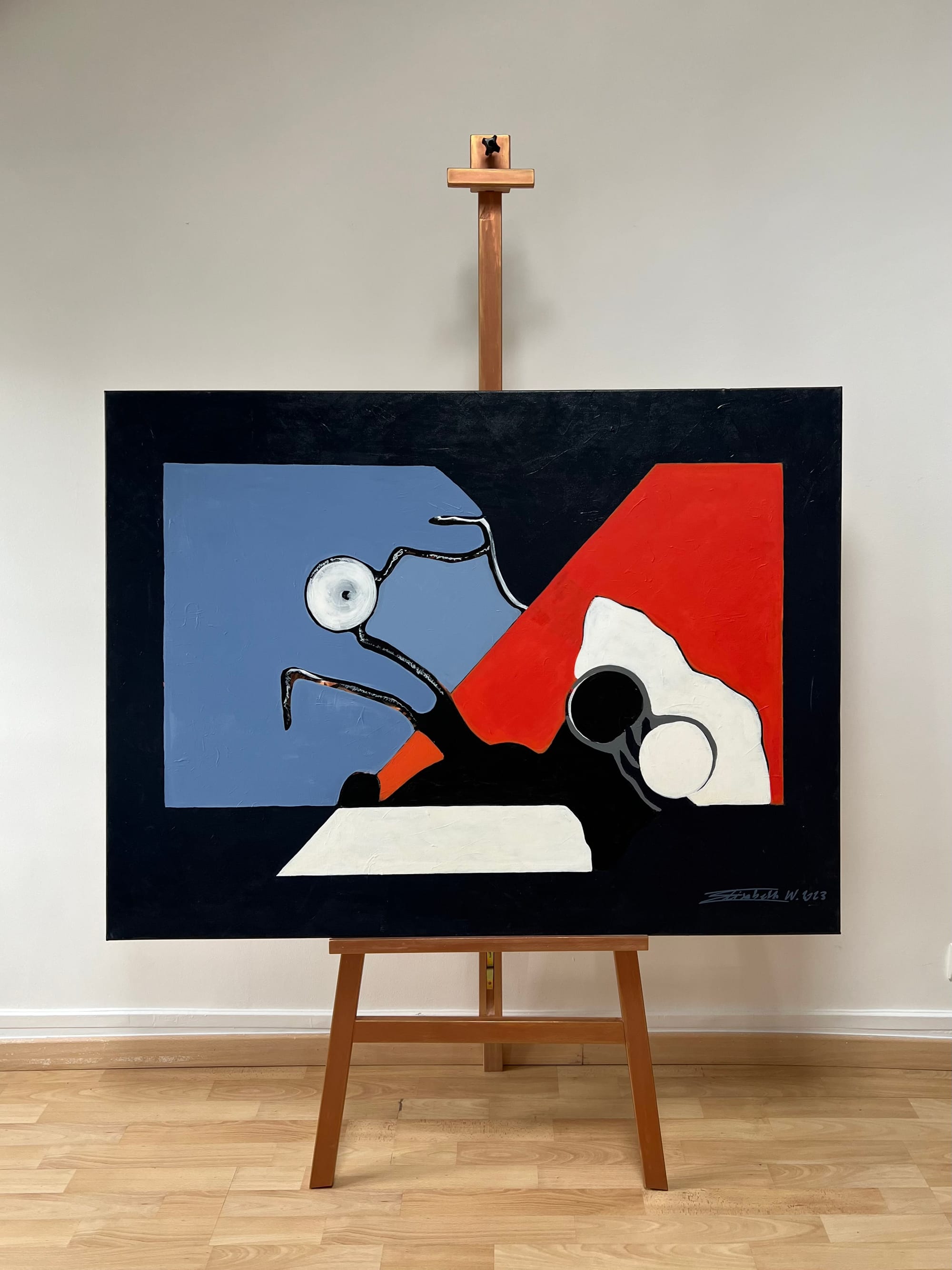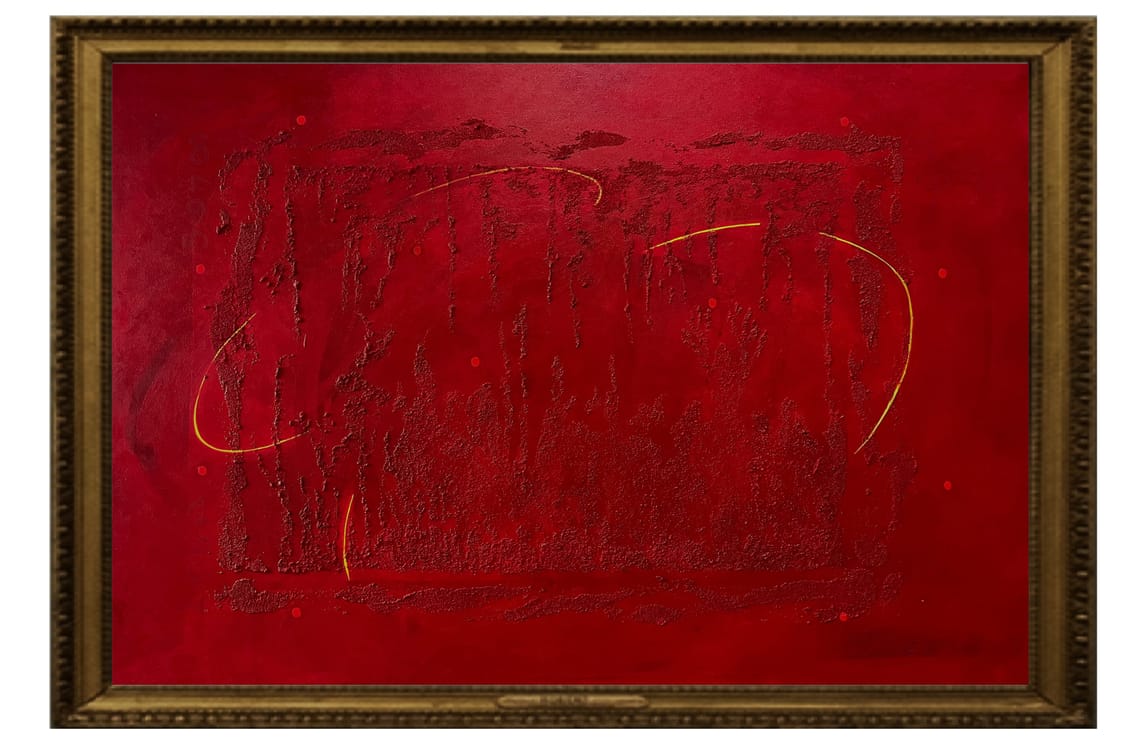This painting began with intentionally but informally written words such as "Abundance, Dollars signs, Freedom, Power, Love, Desires , Empowering quotes etc " concealed by two reversed figures facing each other. One of these beings faded leaving only traces of its existence in partial outlines. The use of a single color block against contrasting details suggests that Contrast defines and specifies the identity of something.
The painting incorporates the concept of yin and yang through the positions of the beings and introduces a color palette of light grey-blue and orange, moving away from traditional black and white or blue and red. The intention is to convey that duality is not absolute, and experiences are often nuanced mixes rather than stark opposites. The piece suggests that our life experiences are shaped by what we seek and the perspectives we adopt or, alternatively, our Intentions and our Truths.
The decision to cover details and chaos with a color block signifies the contrast that provides compatible circumstances for expansion and evolution.
Moreover, the painting acts as a mirror reflecting our inner truth, emphasizing that change in circumstances begins with an inner identity shift. It recognizes that certain aspects of our identity, while considered good, lovable, and safe, may be incompatible with the desired changes. Overall, the painting explores the interplay between Contrast, Identity, and Inner Transformation.
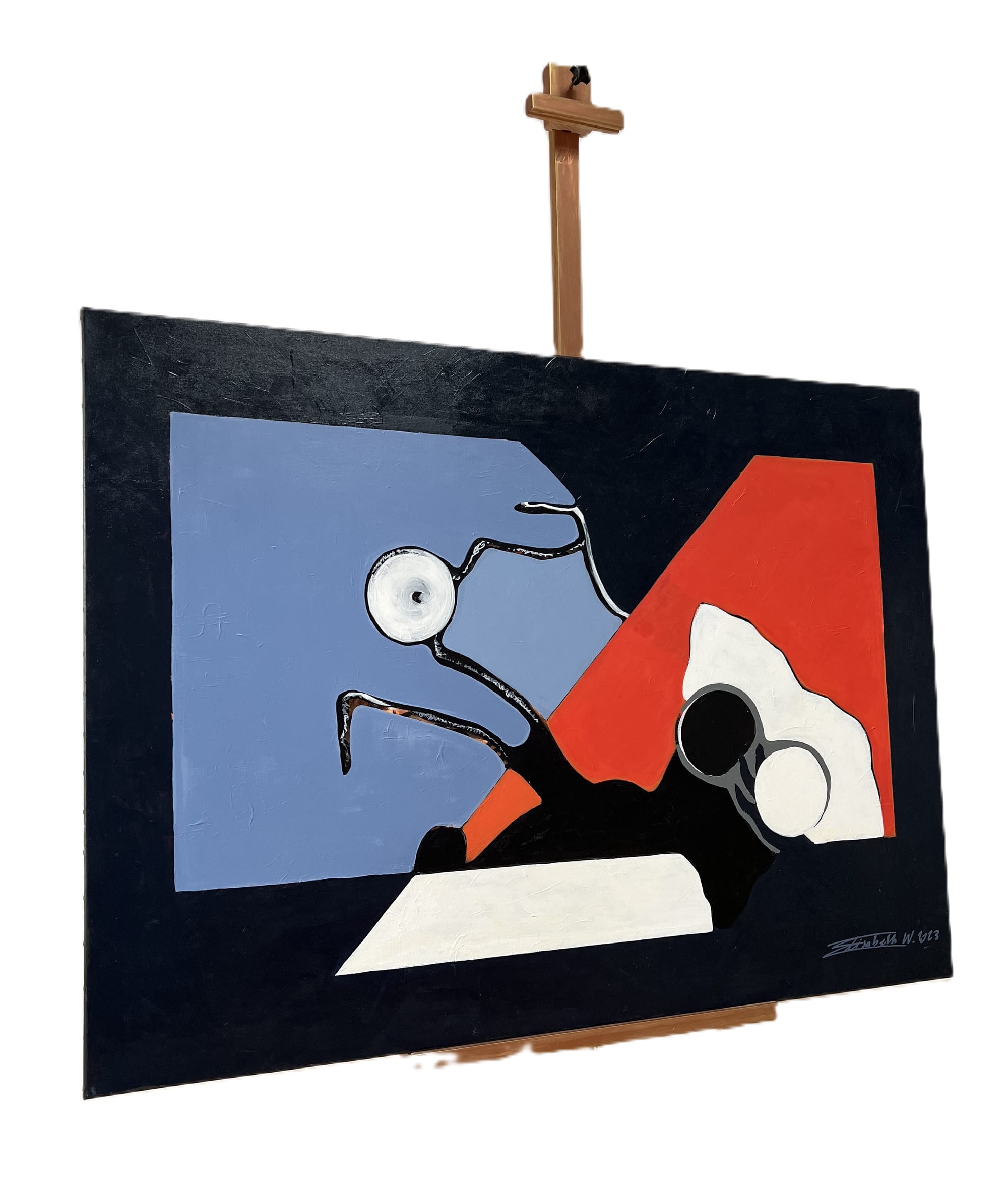
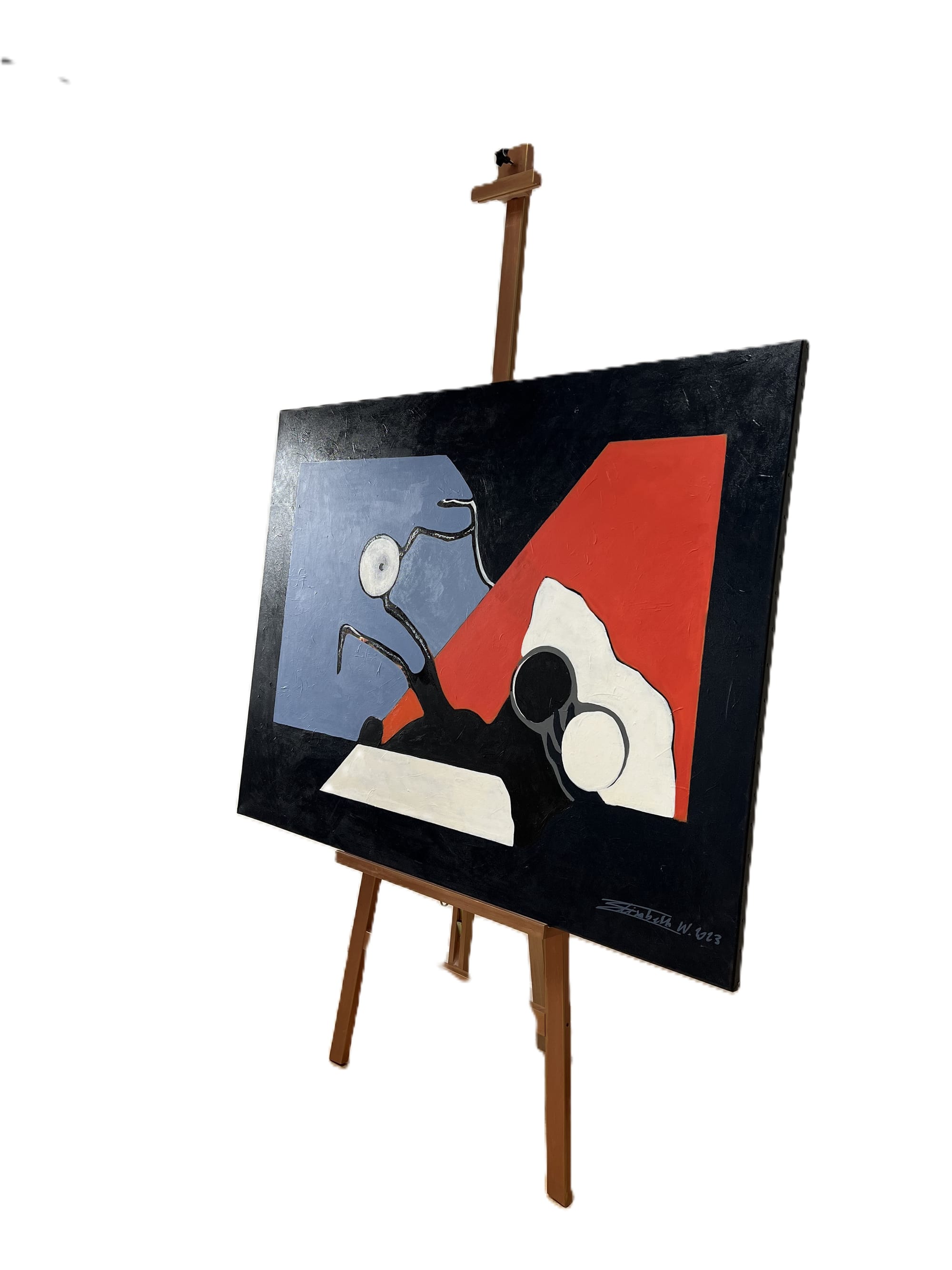
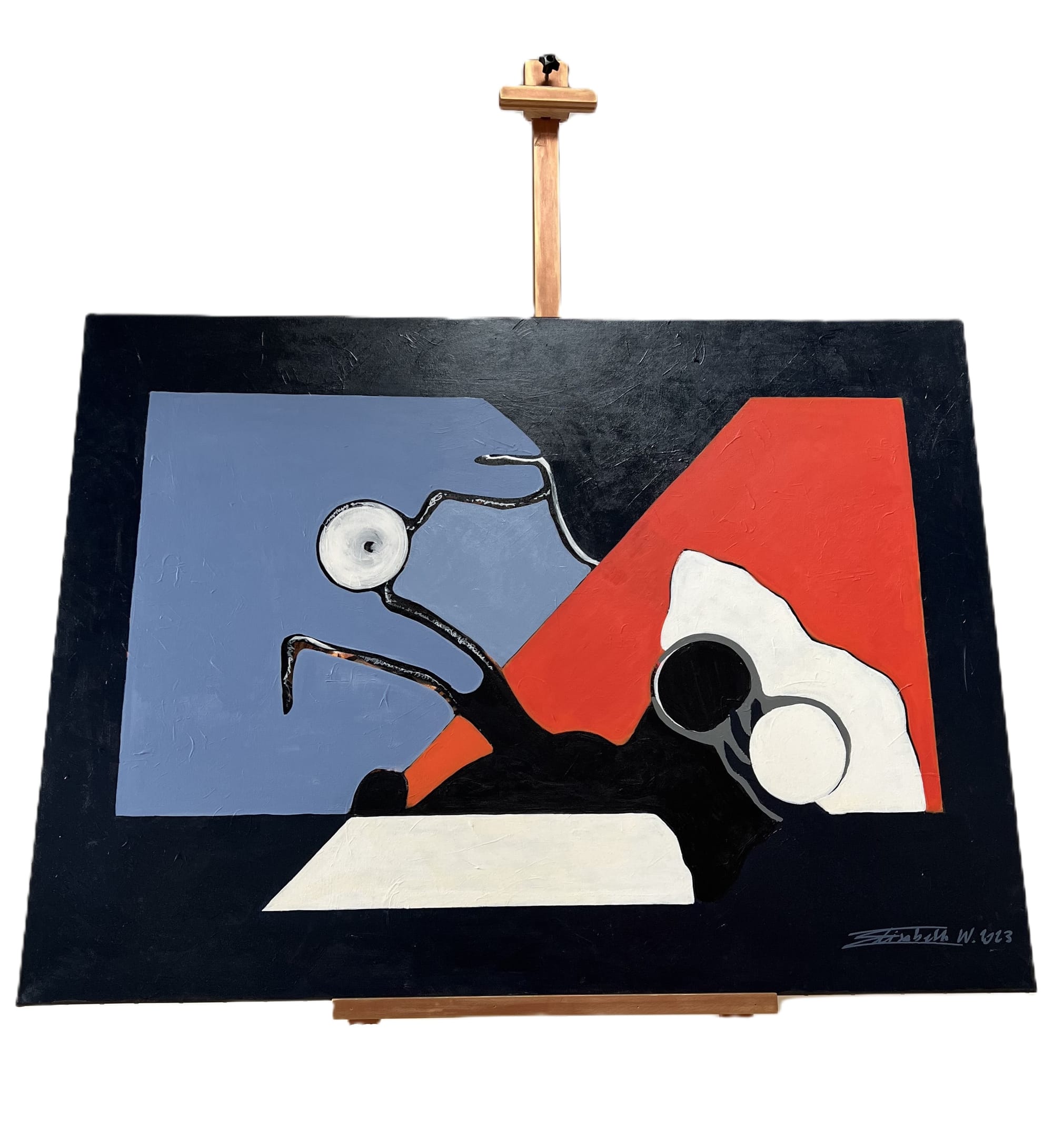
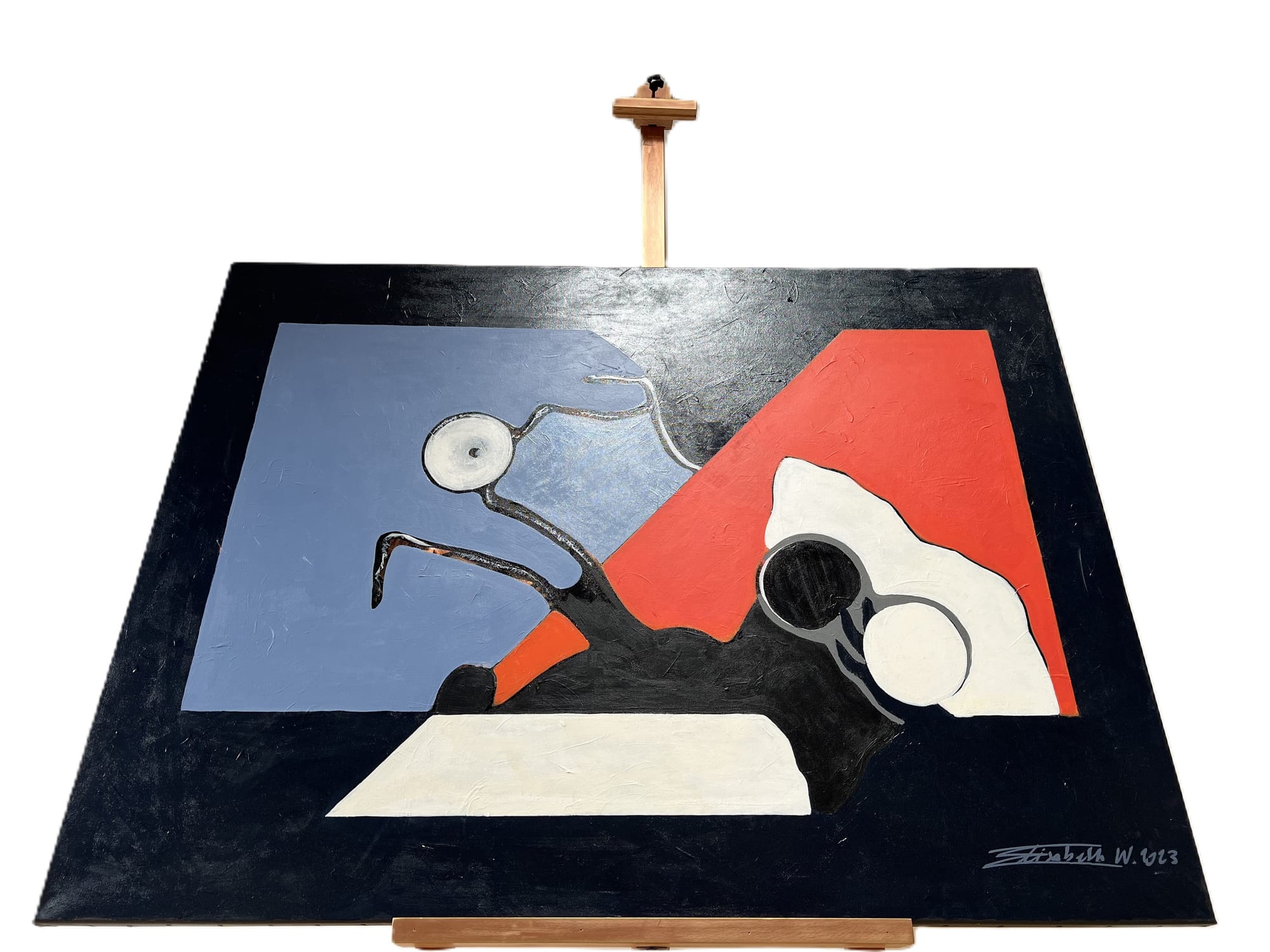
The process


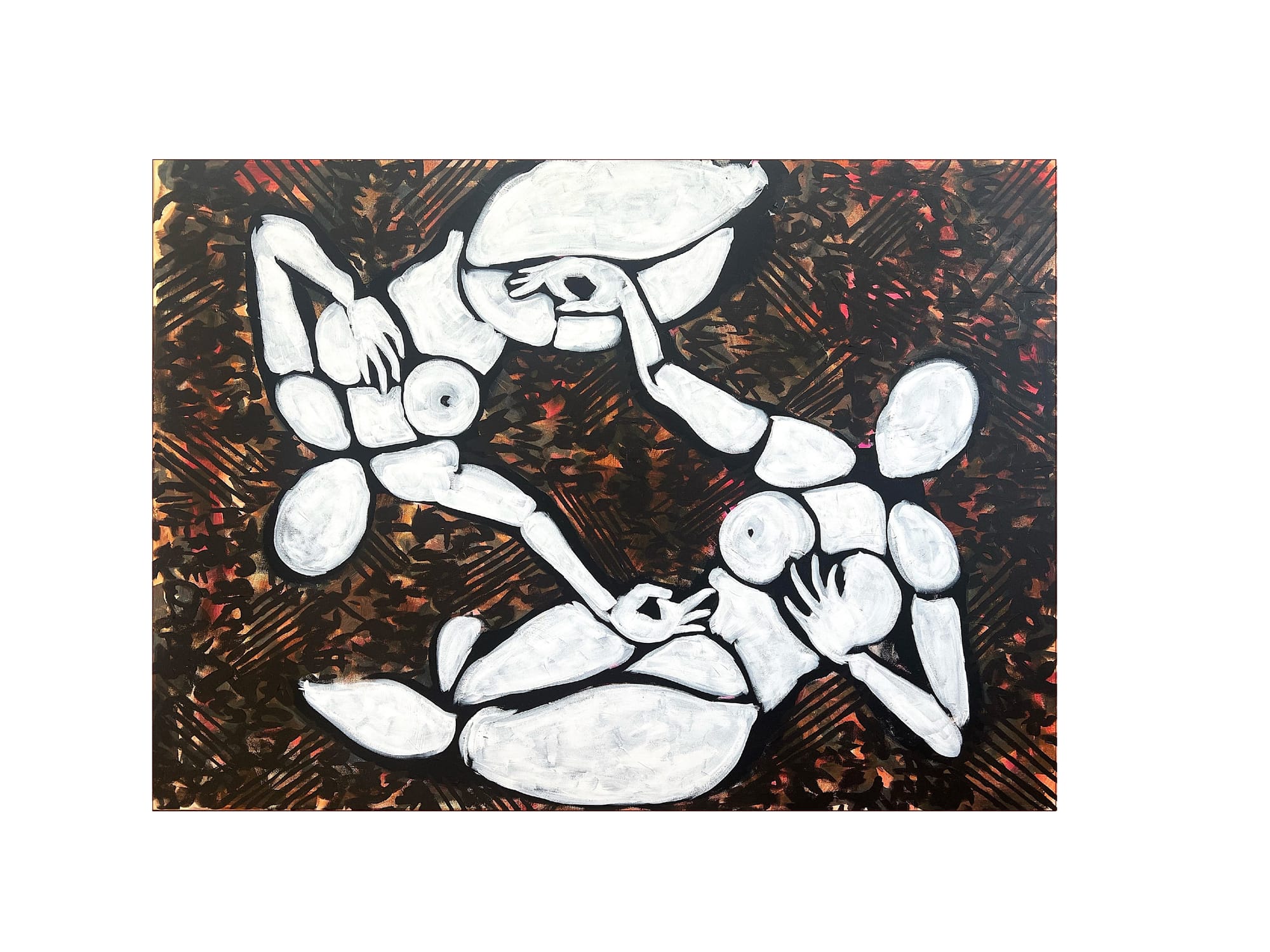
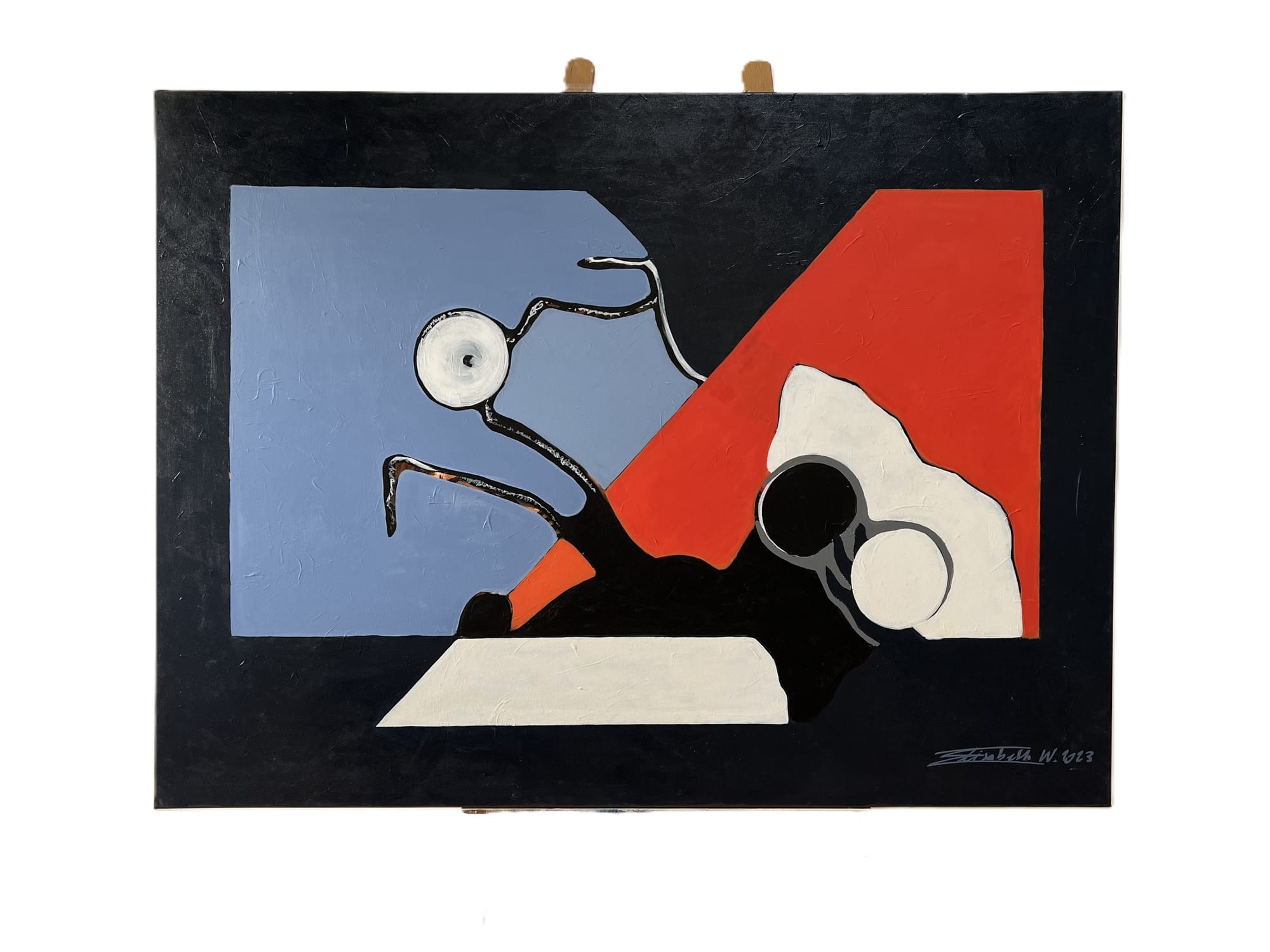
From left to right ending in the bottom right
Mirroring
Cette œuvre explore la dynamique entre le monde intérieur et le monde extérieur — non pas comme deux entités distinctes, mais comme des plans vibrants qui se reflètent et s’altèrent mutuellement.
L’ensemble repose sur une tension symbolique entre deux zones :
- À gauche, une dimension froide, mentale, peut-être inconsciente ou encore non révélée (bleu).
- À droite, un espace pulsionnel, réactif, saturé d’intensité (orange).
Entre ces deux pôles, une matière noire fluide s’étend, se contorsionne, et semble passer d’un monde à l’autre. Cette forme pourrait représenter :
- Une pensée invasive ou incontrôlable, qui se répand dans l’espace psychique et altère la perception du réel.
- Une force vitale primordiale, encore informe, en train d’émerger ou de se battre pour exister.
- Ou encore un traumatisme, agissant comme une mémoire vivante, traversant les couches visibles et invisibles de l’expérience.
Un disque blanc — œil ou vide — semble suspendu, détaché, mais central. Il pourrait symboliser la conscience, tiraillée entre ces deux réalités, spectatrice lucide d’un déséquilibre en cours ou d’une révélation à venir.
Il regarde peut-être le spectateur, ou peut-être la vérité elle-même, encore difficile à accepter.
Ce n’est pas un miroir passif, mais un reflet actif.
L’œuvre pose silencieusement une question :
Et si ce que je vis n’était que le prolongement — ou la conséquence — de ce que je suis ou crois être ?
➤ Galerie
